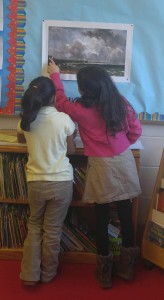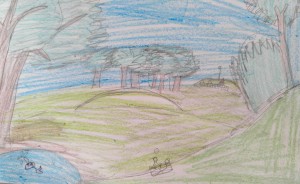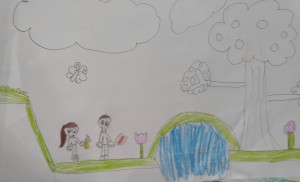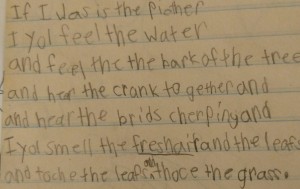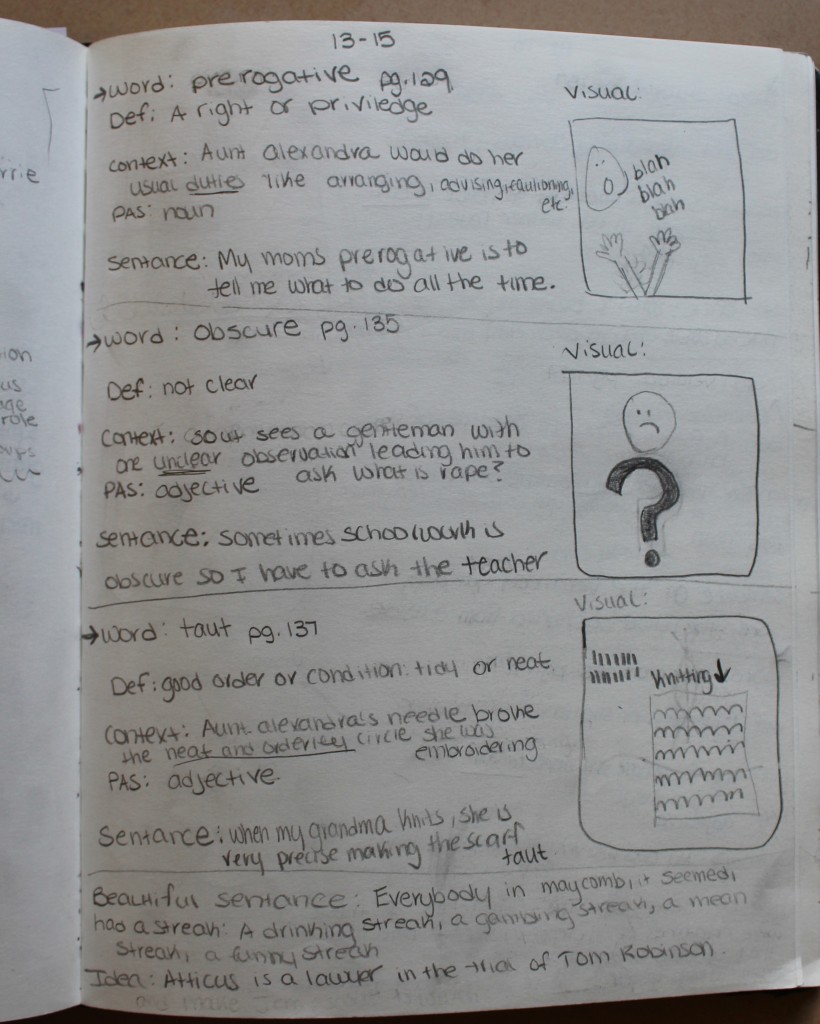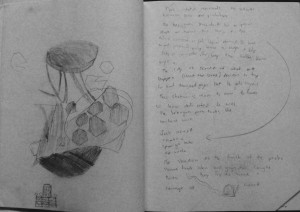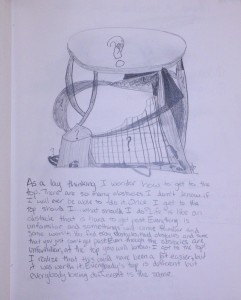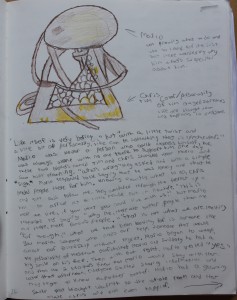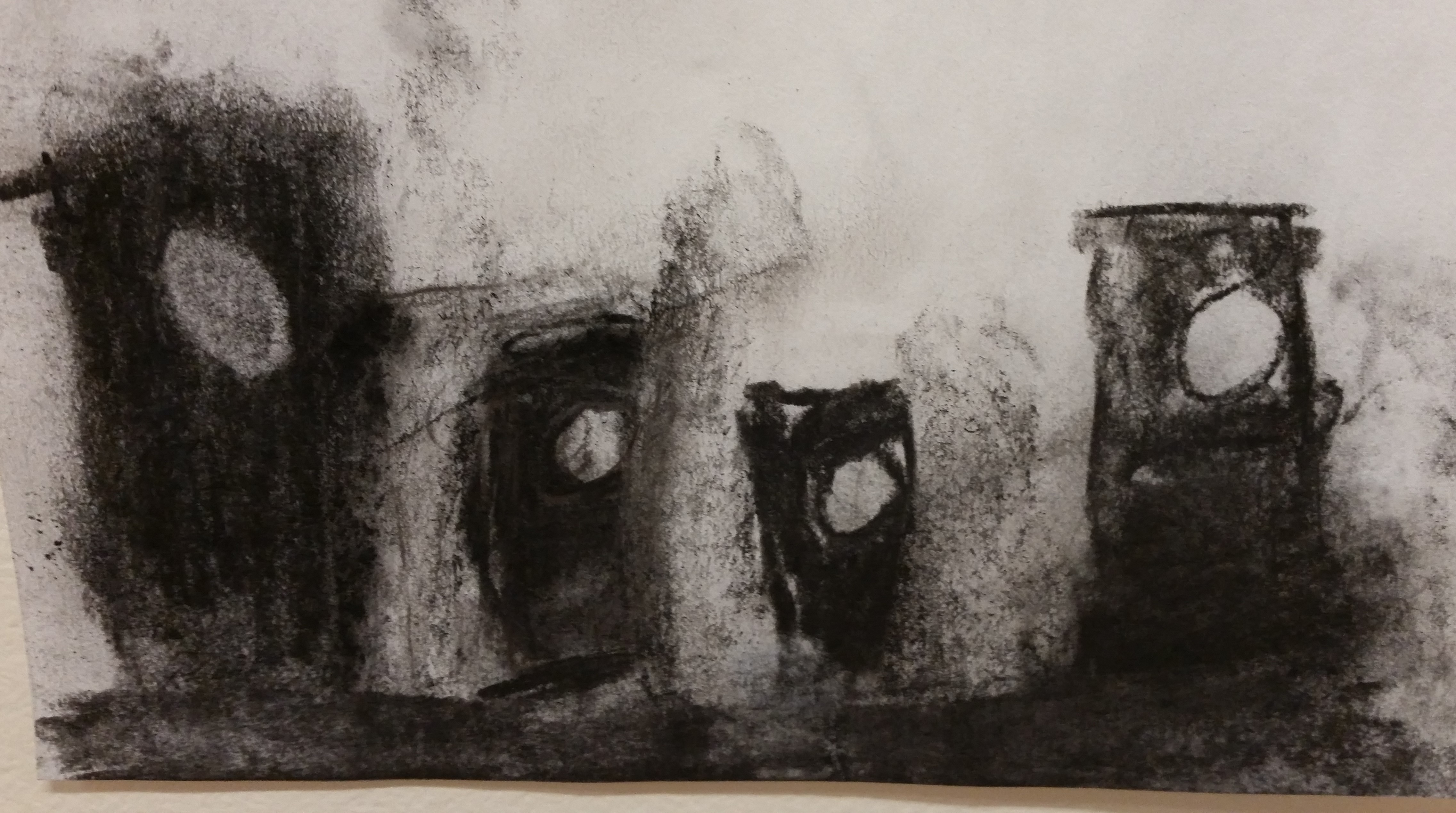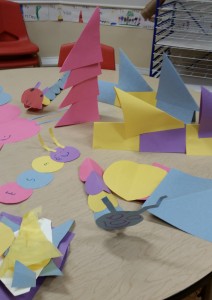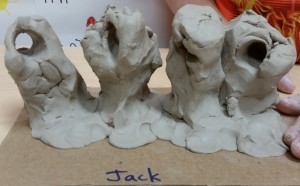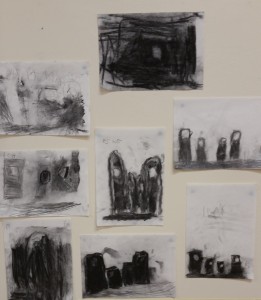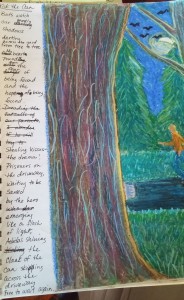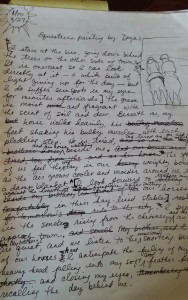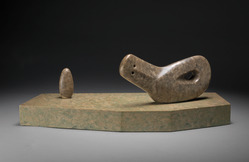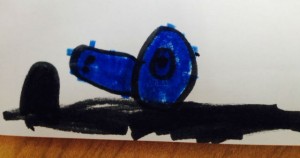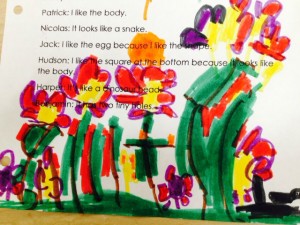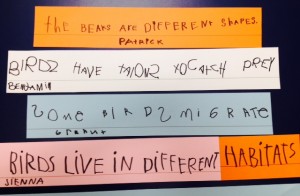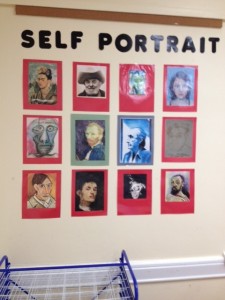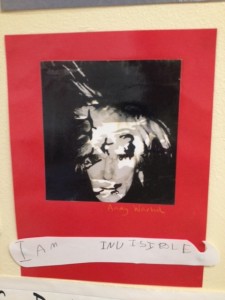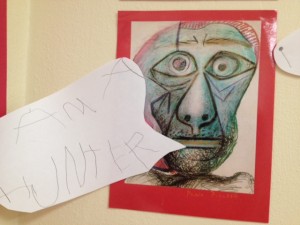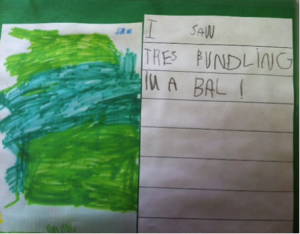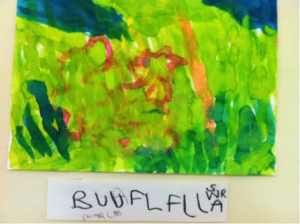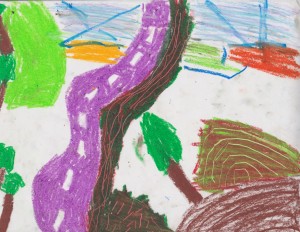This week I visited the third grade classrooms at the Read School in Bridgeport, CT to coach teachers and students in Visual Literacy. The goal was to introduce a pattern of making meaning through these three steps: 1. visual experience; 2. picture-making; 3. writing. All the while, the underlying goal is to get them to slow down and focus, so that they can recognize their own thoughts and stories, and develop their writing voices. This pattern of talking about art, drawing, and writing (in that order) inspires them to make connections to their own lives.
As phones, computers and over-scheduled lives monopolize more and more of our students’ time, the practice of making meaning seems to need our instruction. The good news is, children are thirsty for this kind of self-awareness, and are thrilled to discover that they have so many experiences which are worth writing about.
I began in each class by talking about why I draw before I write. I shared my own journal, reading a piece which started with a sketch of a pair of scissors and led to my writing a memory piece about my mother sewing. The idea was that the drawing, in this case, is not for show, or for beauty; we are drawing like scientists draw: to explore, and to pay attention to the world and to our thoughts.
Then, we established the pattern we will practice to make meaning of our own thinking:
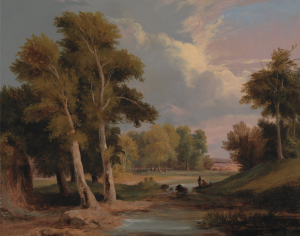
- Visual experience: Discussing a work of art as a class (this painting is on the YCBA website (www.britishart.yale.edu/collections) is an opportunity to: a) focus our eyes and minds; b) share vocabulary and prior knowledge; c) build community.
2. Picture-making: The drawings above were both done in response to the O’Connor painting. Their choice was to either copy the painting itself (left) or to draw something it made them think of from their own lives (right). Both choices give the student the time to reflect, explore detail, and make meaning.
3. Write: Students can have a hard time transitioning from drawing, where they often feel comfortable, to writing, where they often don’t. But these students are predominantly bi-lingual, and easily understood my explanation that their writing is really just a translation of their drawings. This is where they explore their ability to share their thinking and to develop their writing voices. I wrote their choices for writing on the board:
- Imagine you are in your picture. Describe what you would see, hear, smell, feel…help me to see your picture with your words.
- Tell a story about your picture. Pretend it is on “pause,” and describe what happens when you press “play.”
- Your choice: a poem, a letter, etc. about your picture.
Yadeslie’s poem (choice 1), as read to me:
“If I was in the picture/I would feel the water/and feel the bark of the tree/and hear the leaves crack together/and hear the birds chirping/and I would smell the fresh air and the leaves/and touch the leaves and touch the grass.”
Caroline, (choice 2), wrote about her memory with her uncle, saying that “the tree feels wind in the air.” When I read her piece to my husband, he said it reminded him of Wallace Stevens’ line from Of Mere Being: “The wind moves slowly in the branches.” I will be sure to share that poem with them next time I see them, and point out how similar their writing is to Stevens.
Angie (choice 3) decided to describe her process, which was so helpful to me as a teacher and learner:
“When I drew my picture I thought that it was just sand and chairs and water. But then the teacher said to pretend it is a video. I put it on pause and then I played it. The first thing I hear is birds flying everywhere. I was running in the sand. The sun was shining. It smelled like the sea. I saw a sea star. It felt bumpy…it looked orange. I felt the wind blowing through my hair.”
–Darcy Hicks
